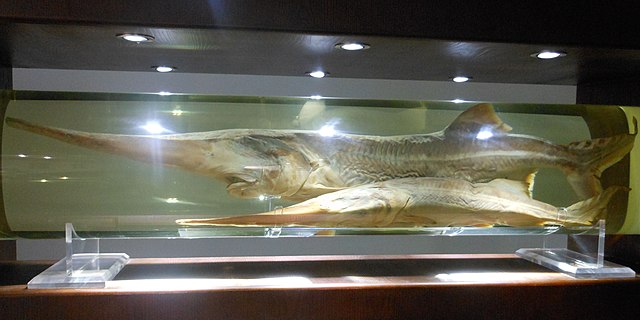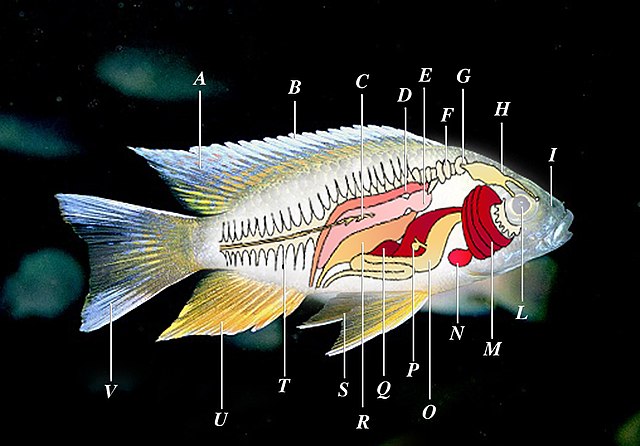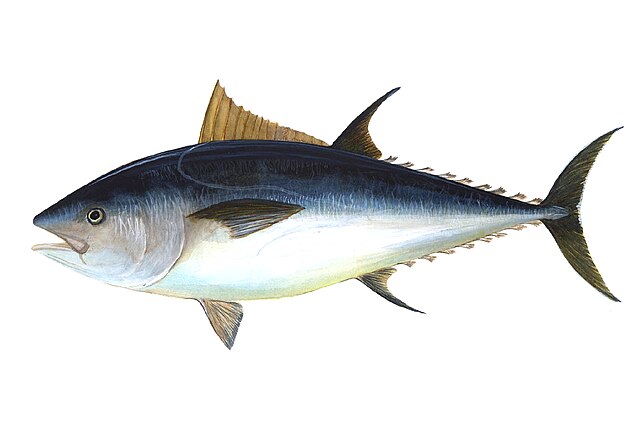Paddlefish are a family of ray-finned fish belonging to order Acipenseriformes, and one of two living groups of the order alongside sturgeons (Acipenseridae). They are distinguished from other fish by their elongated rostra, which are thought to enhance electroreception to detect prey. Paddlefish have been referred to as "primitive fish" because the Acipenseriformes are among the earliest diverging lineages of ray-finned fish, having diverged from all other living groups over 300 million years ago. Paddlefish are almost exclusively North American and Chinese, both extant and in the fossil record.
Image: Paddlefish Polyodon spathula
Image: A specimen of Psephurus gladius, Museum of Hydrobiological Sciences, Wuhan Institute of Hydrobiology (4)
Closeup of the head, showing the presence of electrorecepting organs (ampullae of Lorenzini)
Actinopterygii, members of which are known as ray-finned fish or actinopterygians, is a class of bony fish that comprise over 50% of living vertebrate species. They are so called because of their lightly built fins made of webbings of skin supported by radially extended thin bony spines called lepidotrichia, as opposed to the bulkier, fleshy lobed fins of the sister class Sarcopterygii. Resembling folding fans, the actinopterygian fins can easily change shape and wetted area, providing superior thrust-to-weight ratios per movement compared to sarcopterygian and chondrichthyian fins. The fin rays attach directly to the proximal or basal skeletal elements, the radials, which represent the articulation between these fins and the internal skeleton.
Actinopterygii
Anatomy of a typical ray-finned fish (cichlid) A: dorsal fin, B: fin rays, C: lateral line, D: kidney, E: swim bladder, F: Weberian apparatus, G: inner ear, H: brain, I: nostrils, L: eye, M: gills, N: heart, O: stomach, P: gall bladder, Q: spleen, R: internal sex organs (ovaries or testes), S: ventral fins, T: spine, U: anal fin, V: tail (caudal fin). Possible other parts not shown: barbels, adipose fin, external genitalia (gonopodium)
Tuna are streamlined for straight line speed with a deeply forked tail
Cod have three dorsal and two anal fins, which give them great maneuverability







